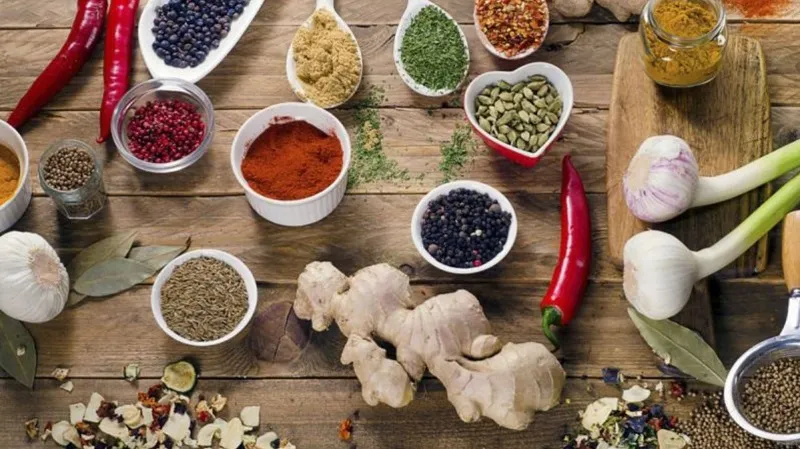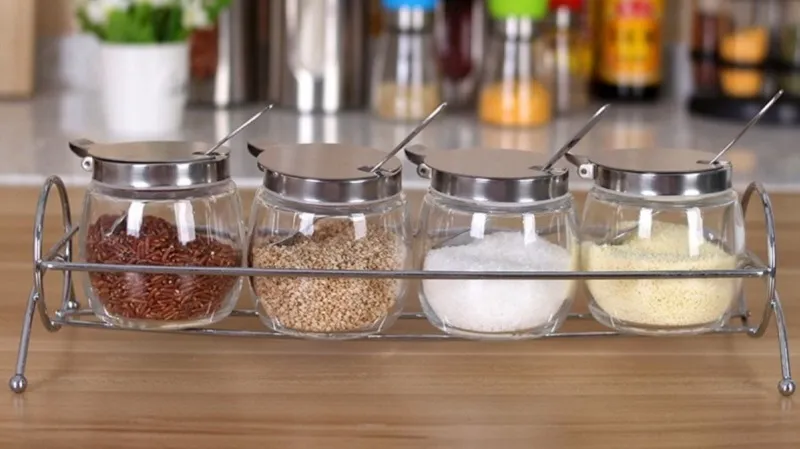Vietnamese cuisine is world-renowned for its sophisticated cooking techniques and the harmonious blend of spices. The diversity and unique character of these spices define each dish, awakening the senses and creating unforgettable culinary experiences. Ever wondered what sets apart the flavors of Northern pho, Hue-style beef noodle soup, or iconic spring rolls? The secret lies within Vietnam’s vibrant and intriguing world of spices.
What Are Spices? Their Crucial Role in Cuisine
Spices, scientifically defined, are foods, herbs, or chemical compounds added to dishes to enhance flavor, color, and stimulate taste. They not only make food more appealing but also aid digestion and offer various health benefits. In Vietnamese cuisine, spices play a pivotal role, acting as the “soul” of each dish, determining its distinctive flavor and culinary success.

Spices enhance the taste of food, stimulate the digestive system, and aid in food digestion.
Classifying Vietnamese Spices: Diversity and Richness
The diversity of Vietnamese spices is evident in various classifications based on origin, properties, and form. Each classification offers a fascinating perspective on this colorful world of spices.
Classification by Origin: From Nature to the Dining Table
- Plant-based spices: This is the most common group, including herbs (mint, cilantro, perilla…), roots (onion, garlic, ginger, galangal…), fruits (chili, lime, kumquat, pineapple…), and seeds (pepper, annatto, mac khen…). Each spice brings a unique flavor, contributing to the richness of Vietnamese cuisine. For example, lime leaves are often used to enhance the aroma of boiled chicken, while galangal is indispensable in the dish “gia cay” (mock civet).
- Animal-based spices: Although less common, this group plays a crucial role in creating unique dishes. Shrimp paste, fermented shrimp sauce, and fish sauce are typical examples. Additionally, there are spices from seafood (sea worms, dried shrimp) or fermented products (fermented rice, vinegar).
Classification by Properties: Balancing Flavors
- Sweet spices: Sugar, honey, maltose… are used to create a subtle sweetness in dishes, balancing other flavors.
- Salty spices: Salt, fish sauce, soy sauce… are essential spices, indispensable in any dish. They enhance flavor and preserve food.
- Sour spices: Lime, tamarind, star fruit, ambarella… bring a refreshing sourness, stimulating the taste buds and making dishes more appealing.
- Bitter spices: Lime zest, tangerine peel, caramel sauce… are often used in small amounts to add a highlight to dishes.
- Spicy spices: Chili, pepper, ginger… bring a pungent heat, warming the body and stimulating the appetite.
- Aromatic spices: Onion, garlic, herbs… create a distinctive aroma for dishes, evoking emotions and enhancing appeal.
- Mixed spices: Five-spice powder, curry powder, chili sauce, satay… are combinations of various spices, creating complex and unique flavors.

Classification by Form: Diverse Forms
- Crystalline spices: Salt, sugar, MSG…
- Liquid spices: Fish sauce, soy sauce, vinegar…
- Powdered spices: Curry powder, turmeric powder, chili powder…
- Fresh fruit spices: Chili, ambarella, tamarind…
- Leaf/Peel spices: Herbs, lime leaves, cinnamon bark…
- Root spices: Onion, garlic, ginger, galangal…
- Mixed spices: Chili sauce, satay, fermented rice…
Secrets to Using Vietnamese Spices Correctly: Elevating Cuisine
Using spices correctly is an art. To make a dish perfect, it’s essential to master these basic principles:
- Appropriate dosage: Each dish has a specific recipe, requiring different amounts of spices. Using too much or too little can ruin the dish’s flavor.
- Harmonious combination: Spices have synergistic and antagonistic properties. Understanding the characteristics of each spice and how they interact with each other helps create delicious and nutritious dishes. For example, dishes with “cold” properties are often combined with “hot” spices to balance yin and yang.
- Timing of use: The timing of adding spices is also crucial. Some spices need to be added from the beginning to fully infuse the food, while others should only be added at the end to preserve their aroma.
Popular Vietnamese Spices: Culinary Essence
- Salt: A basic spice, indispensable in every kitchen. Salt not only enhances flavor but also preserves food.
- Sugar: Creates a subtle sweetness, balances flavors, and provides energy for the body.
- Fish sauce: The “soul” of Vietnamese cuisine, made from anchovies, mackerel… Fish sauce is used for dipping, marinating, and seasoning, creating a distinctive flavor for many dishes.
- Vinegar: A fermented spice with a refreshing sour taste. Vinegar is used to remove fishy odors, make salad dressings, or cook sour soups.
- Garlic: A pungent aroma, often used for frying until fragrant, marinating meat, or making dipping sauces.
- Fried shallots: Creates a distinctive aroma, often sprinkled on dishes to enhance appeal.
- Ginger: Warm properties, pungent taste, often used to remove fishy odors from seafood, or brewed as tea to keep the body warm.
- Turmeric: Bright yellow color, distinctive aroma, often used to create color and flavor for stir-fries and braised dishes.
- Pepper: Pungent, warm aroma, stimulates taste buds and adds richness to dishes.
- Chili: Hot and spicy, often used to make dipping sauces or season spicy dishes.
- Fermented rice (Cơm mẻ): A distinctive spice of Northern Vietnam, with a refreshing sour taste, often used to cook soups, hotpots, or make dipping sauces.
Conclusion
The world of Vietnamese spices is a priceless treasure, contributing to the uniqueness and appeal of Vietnamese cuisine. Exploring and understanding spices not only helps us cook better but also is a way to appreciate and preserve the traditional cultural values of the nation. Experiment and get creative with spices to create dishes with your personal touch and discover new flavors of Vietnamese cuisine.